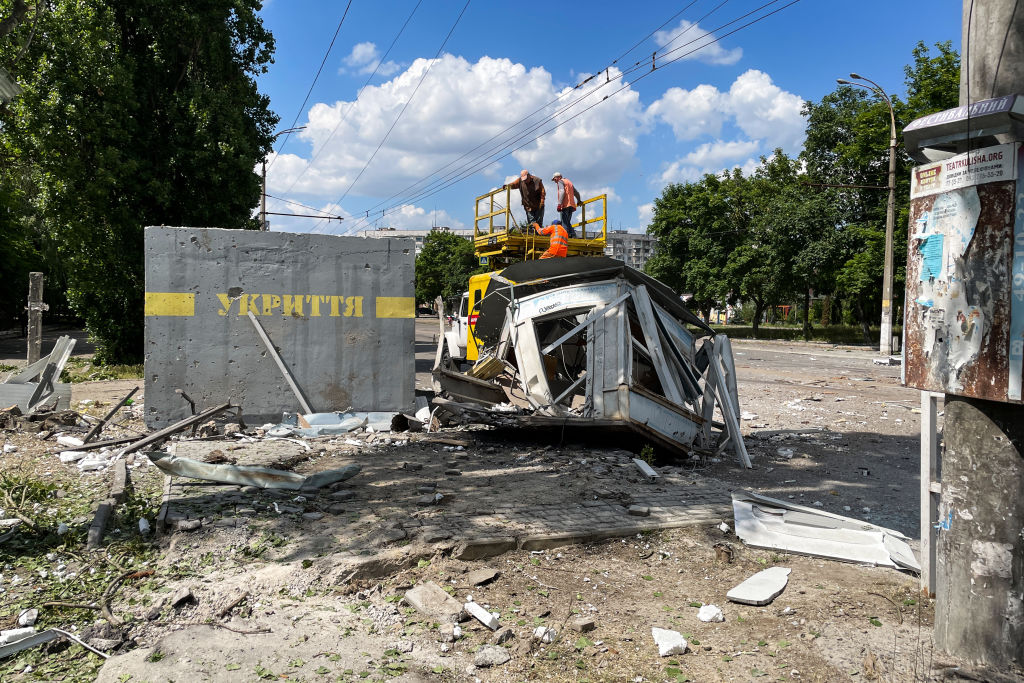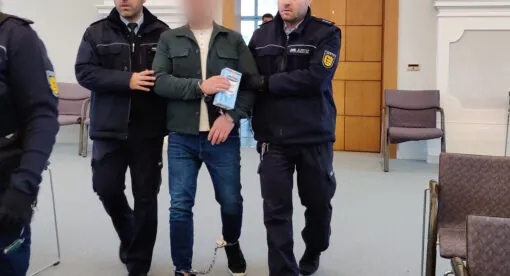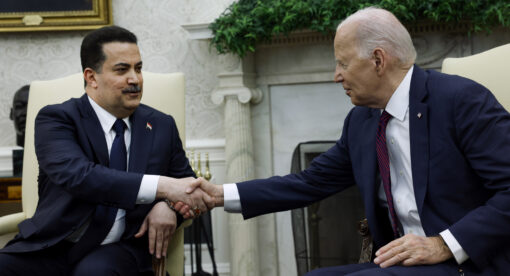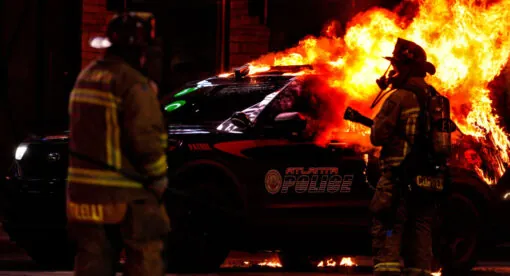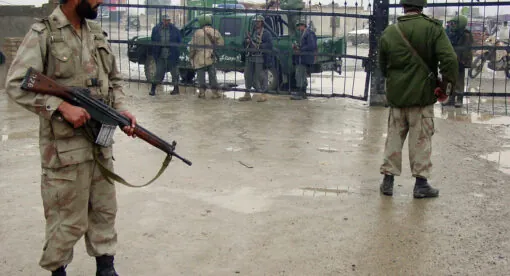Introduction:
A year and a half into Russia’s invasion of Ukraine, the Ukrainian military in early June began its highly anticipated counteroffensive. This thus far slow-moving operation, coupled with the insurrection of the Wagner Group and other developments, has created new dynamics on the battlefield.
Ukrainian forces seek to quicken the pace by cutting through heavily defended Russian lines in Zaporizhzhia. Their goal is to take back the coastal region around Berdyansk and Melitopol connecting Russian-held territory in the east and Russian-occupied Crimea – regions held by Russian-backed separatists or the Russian military directly since the beginning of the conflict in 2014. Should Ukrainian forces break through, the examples to date of Russian withdrawal from regions they had occupied in Ukraine offer important insights into the post-occupation dynamics that will shape the trajectory of the conflict and the future of Ukraine.
To understand the dynamics of Russia’s further withdrawal from Ukraine, it is useful to examine its withdrawals from Kharkiv and Kherson. In September 2022, Ukrainian forces launched a counteroffensive that restored the integrity of the majority of the Ukrainian border in Kharkiv Oblast. Meanwhile, the Ukrainian counteroffensive in the southern oblast of Kherson yielded much territory northwest of the Dnipro River, eventually forcing a Russian withdrawal from the city of Kherson in early November.
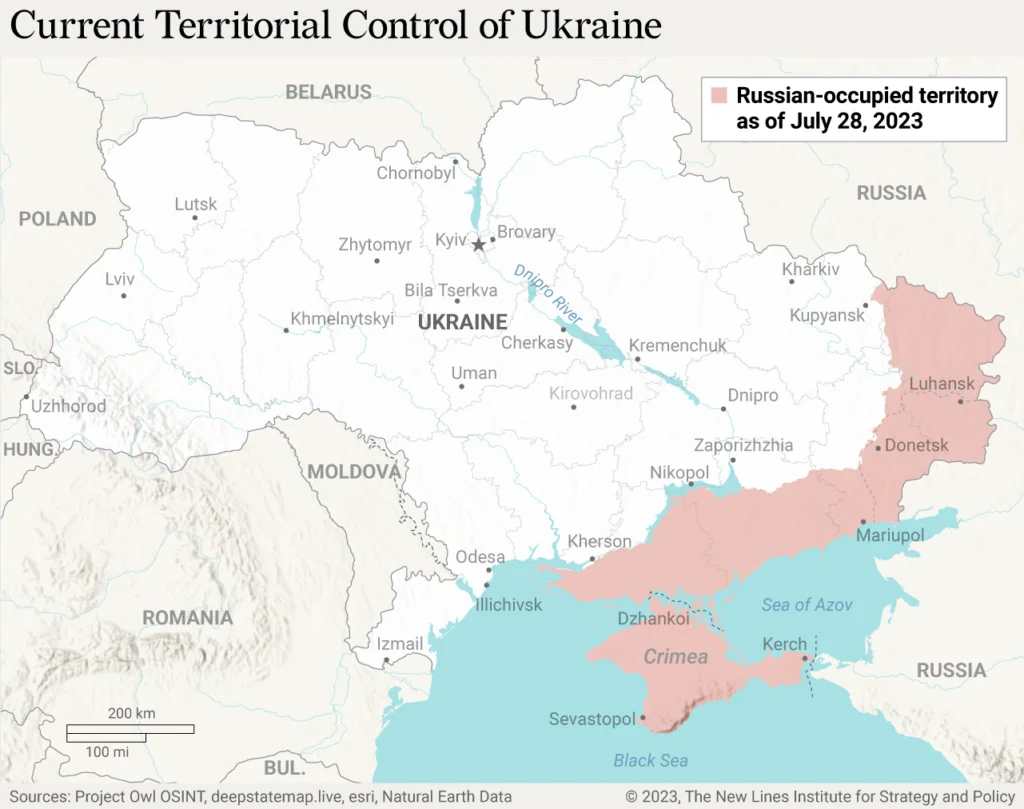
The conditions in post-Russian withdrawal Kharkiv and Kherson have created complications for Ukrainian authorities in their efforts to reintegrate and rebuild these territories. In both regions, Ukrainian authorities face difficult tradeoffs in adjudicating allegations of collaboration with Russian occupation authorities and struggle to reestablish Ukrainian state authority amid the shifting dynamics of the military conflict with Russia. The Russian military’s continued targeting of civilian infrastructure, including in these territories, aims to undermine the legitimacy of the Ukrainian state by compromising its capacity to provide basic services, such as electricity and water. The success of Ukraine’s efforts to reintegrate these territories will have ramifications far beyond the war itself, including for the authority and perceived legitimacy of the post-war Ukrainian state.
Recognizing the fragility of the post-occupation political environment in Kharkiv and Kherson in particular, U.S. policymakers and their counterparts among allies and key partners should seek to prioritize support for reconstruction in formerly occupied territories. The U.S. government should also continue its support for justice and accountability in Ukraine, including through capacity building measures to help Ukrainian authorities establish clear and uniform standards for prosecuting people accused of collaboration with Russian occupation forces.
Kharkiv
Though Kharkiv, Ukraine’s second largest city, never fell to Russian military advance, most of its northern and eastern environs came under occupation in early March 2022. A Ukrainian counteroffensive ended Russian occupation in most of Kharkiv in September 2022, except for some villages northeast of Kupiansk on the border with Luhansk Oblast, which presently remain under Russian control.
In the areas of Kharkiv Oblast that they occupied, Russian occupation forces had enough time to properly invest in creating loyal civilian administrations. In the city of Izyum, a major center of eastern Kharkiv Oblast, a failed mayoral candidate, Vladislav Sokolov, took the lead among collaborators. While many officials fled from Izyum to Kharkiv, some elected to stay behind and continue in their positions under Russian occupation. Those who participated in the occupation administration in Izyum did so for a mix of reasons, including “fear, pro-Russian sympathies, opportunism, [and] the hope of doing something productive for the city.” Those who stayed in Izyum and worked with Russian occupation authorities purport that they were offered no alternative by retreating Ukrainian forces.
Russian occupation forces often used control over limited food rations as a means of exercising control over the population. Poor economic conditions before Russia’s February 2022 invasion of Ukraine, coupled with general economic collapse following the invasion, exacerbated economic dependencies on Russia. Residents of Balakliia reported that to receive food rations, Russian occupation authorities required them to provide their home address, their Ukrainian identification cards, and passports. Russians also searched locals’ cell phones for pro-Ukrainian content. The collection of personal data by Russian occupation forces in exchange for food was an integral part of building an alternative administration in occupied Kharkiv Oblast.
Occupation forces sought to earn the loyalty of local Ukrainians by continuing existing services while integrating these communities into Russian administrative structures. Buying into this system provided one with some supplies and administrative recourse. Russia also sought to foment the fear that, should Ukrainian forces return, any interaction with Russian administration would be considered collaboration. Even after the end of occupation, residents of Kupiansk in eastern Kharkiv Oblast have been accused of taking photographs of Ukrainian aid workers distributing supplies so that Russian forces, should they return, can punish pro-Ukrainian residents. The acting mayor of Kupiansk, who has taken the place of a city administration that almost uniformly collaborated with Russian forces and fled to Russia with the Ukrainian advance, has highlighted that the material progress of reconstruction efforts will be central to the long-term reestablishment of Ukrainian authority in towns like his.
In the end, by a combination of coercion and persuasion, many pragmatically chose to work with the occupiers. This situation created many complications with the return of Ukrainian forces and the expulsion of the Russian occupation in September 2022, as Ukrainian prosecutors and military officials have sought to create clear standards for what activities constituted collaboration, how they will process alleged collaborators, and the punishment for those found guilty.
Investigations and arrests continue. In late April, Ukrainian authorities arrested an entrepreneur in Kupiansk who allegedly, with the support of the Russian occupation forces, exported $135,000 in Ukrainian wheat to Russia and paid Russian taxes. In total, from the start of the full-scale invasion until May 2023, Ukrainian authorities convicted 142 individuals in Kharkiv of collaboration with the Russian occupation. The sentences ranged from fines to, in the case of a Balakliia judge who in April 2022 joined the legal department of the Russian occupation administration of Kharkiv Oblast in Kupiansk, life imprisonment.
It was after Ukrainian success in recapturing occupied portions of Kharkiv Oblast that the Russian military began to focus on the large-scale targeting of civilian energy infrastructure across Ukraine – a strategy based in part on the intuition that a Ukrainian state stripped of its ability to provide electricity and other critical services would be seen as less legitimate to its citizens. In December 2022, Russian strikes delivered significant damage to Kharkiv’s power infrastructure, leaving much of the city dark, cold, and without water. The targeting of energy infrastructure in Kharkiv has continued in the months since, as it has across vast portions of Ukraine. The sheer size and strategic importance of Kharkiv will make it a priority for resources and energy in reconstruction, though areas in the east of the oblast, like the de facto capital of the occupation administration in Kupiansk, will face complications from ongoing investigations of collaboration and greater proximity to the zone of active conflict.
Kherson
Located in Ukraine’s south, Kherson was the only Ukrainian oblast capital to fall in Russia’s February 2022 offensive. The rapid progress of Russian forces advancing from Crimea into other regions of southern Ukraine was a major Russian strategic success in the early days of the war.
The post-withdrawal landscape in Kherson is similar to that faced by Ukrainian authorities in Kharkiv, though Russian efforts to integrate Kherson Oblast had been more intense. On September 30, Russia formally annexed the oblast (along with Donetsk, Luhansk, and Zaporizhzhia), though it did not at that time control the entirety of the oblast’s territory. Russia appointed a parallel regional administration under Vladimir Saldo, which since the end of Russian occupation in the city of Kherson has been headquartered in Henichesk, near the narrow strip of land connecting Crimea to the rest of Ukraine. During the occupation, pro-Ukrainian locals put up posters calling for an end to occupation and allegedly attempted acts of assassination and sabotage against the Russian occupation administration. The most high-profile of these acts was the killing of the deputy head of the city administration of Kherson, Dmitry Savluchenko, on June 24, 2022.
Since the Ukrainian counteroffensive that ended Russian occupation of the oblast’s territory north and west of the Dnipro River, Kherson remains largely depopulated. As in Kharkiv, allegations of collaboration with the Russian occupation administration continue to create complications for reintegrating the areas into Ukrainian administration. In late May, the Ukrainian state broadcaster Ukrinform reported that law enforcement were investigating 2,000 individuals on charges of collaborating with the Russian occupation. Emblematic of the thorny issues around allegations of collaboration is the case of Kherson Mayor Ihor Kolykhaiev, who came to an agreement with occupation forces after they took his city in March 2022, choosing to remain mayor rather than flee. In the following months, the Russian occupation forces dismissed him from his post and abducted him.
Kherson also faces unique stresses because it remains the launching point of any potential Ukrainian offensive on Crimea. The city itself is on the front line, with Russian troops manning the position directly across the Dnipro River. Russian occupation forces went to great lengths to try to integrate Kherson into Russia, in part as an effort to solidify the oblast as a buffer between Ukrainian forces and Crimea, which is the region of Ukraine that Russian occupation forces have most successfully integrated. Russia annexed Crimea in 2014 and has enjoyed a continuous presence for its Black Sea fleet in Sevastopol since the late 18th century.
The territory of Kherson Oblast reclaimed by Ukrainian forces remains devastated, and investigations into alleged collaboration continue, all while the territory of the oblast to the southeast of the Dnieper River remains under Russian control. The June 6, 2023 destruction of the Kakhovka Dam by Russian forces and the consequent flooding in the region highlighted the continued precarity of the situation in Kherson. Reconstruction and any return to normal in Kherson are not conceivable while the conflict continues and the oblast remains divided along the river.
Moving Forward
Russian withdrawals from Ukraine have unique dynamics that make their consequences distinct from any potential Russian movements away from its military commitments in Belarus, Central Asia, the South Caucasus, or Syria. Russia’s claims that many regions of Ukraine are primordially Russian and its equating its aggressive war with World War II have elevated the war to a matter of existential importance for the present Russian regime.
Beyond damage to infrastructure and legal proceedings against collaborators, the fiscal politics of Russian occupation are increasingly important, especially if Western financial assistance to Ukraine dwindles. While the U.S., EU, and others have made an unprecedented commitment to bankroll Ukraine’s defense, the consensus for such large spending in the future is not a given. Territory held by Russian occupation forces is outside of the Ukrainian tax enforcement regime.
The Ukrainian finance ministry has reported that it has received record donations and that many Ukrainians have chosen to pay their taxes ahead of schedule. More impressively, in 2022, 2.3 million individuals and organizations in Russian-occupied Ukraine paid $9.5 billion in taxes through the online portal of the Ukrainian tax service. That these revenues continued to be paid voluntarily from regions of Ukraine that war has devastated economically may be a signal of continuing loyalty to Ukraine or hedging against potential accusations of treachery should Ukrainian forces return to their regions. The geography of tax collection in Russian-occupied Ukraine, where almost all revenues are collected from outside of Crimea, reflects how much stronger Russian authority is in Crimea than in the other occupied territories.
If Ukrainian forces push Russia to withdraw from Crimea or Donbas, the issue of dealing with collaborators will become even more complicated. Russian withdrawals have left civilian populations traumatized, not only for the deprivations and repression they faced under the Russian occupation administration but also for the whiplash of having to respond to competing calls for loyalty in a desperate humanitarian context. In the case of the regions of Ukraine that have thus far witnessed Russian withdrawals, the sense that Russia was here to stay helped rationalize locals’ decisions to work with occupation authorities. At the same time, that Ukrainian forces were able to break this illusion means the sense of inevitability would not be the same if Russian forces were to retake these regions.
U.S. policymakers should support their Ukrainian counterparts to prioritize the restoration of basic services in formerly occupied Kharkiv and Kherson and adopt a pragmatic approach to dealing with alleged collaborators in the interest of preserving Ukraine’s regained control in the formerly occupied territories. Though many Ukrainians in occupied territories have shown stalwart support for their government and resisted Russian occupation, persuading Ukrainians from these territories with less-certain loyalties that the return of Ukrainian control will be better for them and for their communities remains, alongside the present military counteroffensive, the defining task ahead. Washington can play an important part in providing Kyiv with the necessary resources to pursue such a strategy.
Sam Harshbarger is a research assistant with the Foreign Policy Research Institute. He is a senior at Princeton University studying history with a focus on modern Russia, Turkey, and Eurasia. He previously worked as a research assistant at the New Lines Institute and interned with Evergreen Strategy Group and the Georgian Foundation for Strategic and International Studies (Rondeli Foundation).
The views expressed in this article are those of the author alone.

